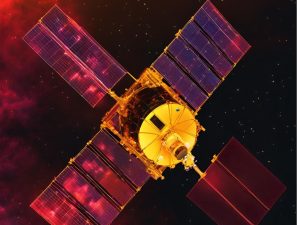On a clear California morning in June 2023, history was made at Vandenberg Space Force Base. As the Skykraft satellite thundered into orbit, it carried with it SnT’s first-ever space payload: AI4Space. This groundbreaking mission marked the beginning of a new chapter in spacecraft health monitoring: it combined thermal imaging with artificial intelligence.
The mission: Revolutionising spacecraft health monitoring
Space exploration has always pushed the boundaries of innovation. But monitoring spacecraft health remains a complex challenge. Traditional satellites rely on hundreds of individual temperature sensors scattered throughout their systems. The AI4Space team envisioned a simpler, more powerful solution.
“Thermal imaging presents two main advantages,” explains Konstantinos Kanavouras, Doctoral Researcher at SpaSys Research Group. “With about 1,000 pixels from one single point, a thermal camera could replace many traditional sensors while offering more measurement points.” So combined with AI, thermal imaging could allow the detection of temperature anomalies much more accurately than sensors. It could also help model predictive behaviour.
The innovation combines four mini infrared cameras with a processor running machine learning algorithms. The Space Systems Engineering (SpaSys) and Computer Vision, Imaging and Machine Intelligence (CVI2) research groups collaborated to bring this vision to life.
From launch pad to space: A journey of firsts in space systems engineering
The mission’s early phase showed promise. In October 2023, the team reached a key milestone: they established communication with the payload. For a first-time space mission, this success validated months of careful preparation and technical expertise.
However, space missions rarely follow a perfectly straight path. Soon after this initial triumph, the team encountered a communication protocol issue. The next two months became an intense period of remote troubleshooting and careful updates, testing the team’s problem-solving abilities to their limits.
The team’s persistence paid off. They fixed the communication issue through remote updates, demonstrating their technical expertise in space systems engineering. This challenge reduced their data collection window, But, it gave them real-world experience in handling space mission issues.
Laying the groundwork for future space missions
The team couldn’t collect enough thermal images to train their algorithm with space data due to the shortened data collection period. But, the mission achieved several crucial objectives. The thermal imaging system proved functional in orbit, validating the core concept of their innovation.
The project’s impact extends far beyond its original goals. The ground-based circuit board has caught other research groups’ attention. PhD and master’s students are planning new projects using the thermal imaging tech and machine learning algorithms developed for AI4Space.
Perhaps most importantly, the team built a robust foundation for future space missions. They developed expertise in electronics design, software development, and systems engineering. Their project management processes, including agile methods and non-conformance reports, will serve as blueprints for future missions.
A foundation for space innovation
Success in space research isn’t always measured by achieving every planned objective. Sometimes, the best results come from facing unexpected challenges that can lead to new ideas. The AI4Space mission embodies this principle perfectly.
The knowledge gained, the problems solved, and the systems developed have created a launch pad for future space research at SnT. As the team looks to their next missions, they carry forward more than technical skills. They have the experience of running a space mission from concept to completion.
In the end, AI4Space represents more than just SnT’s first venture into orbit. It marks the beginning of a new approach to spacecraft health monitoring and sets the stage for the next generation of space innovation. The journey continues. It’s based on lessons learned and challenges overcome in this pioneering mission.
